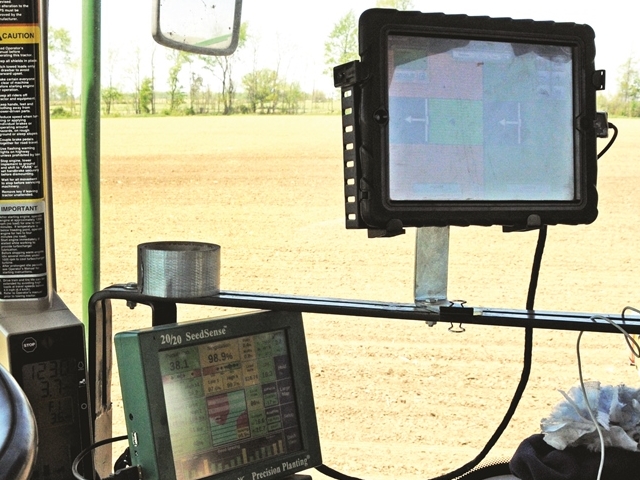Precision farming tools, from automation to variable rate technology (VRT) and others, are giving farmers new ways to make and save money. Before you dive into precision farming with both feet, it’s invaluable to identify which technology is likely to give you a return on investment now and which ones might take more time before you can pocket any profits.
“The technologies that have been the most rapidly adopted are those that are automated,” says Bruce Erickson, Purdue University agronomy education distance & outreach director. “Things like sprayer controllers, planter row shut offs and tools that guide implements through the field are helping reduce costs.”
Sprayer nozzle and section controllers, for example, can save on fertilizer and pesticide costs by cutting down inevitable oversprays. Tools such as turn compensation also help ensure each part of a field gets the right rate so the outside turn end of the sprayer doesn’t miss out and the inside doesn’t get too much. Planter shut offs help save seed costs with the same principle.
“Farmers starting in precision can look to automated guidance and controllers as an easy way in with clear ROI,” Erickson says. Sprayer controllers, for example, can pay for themselves in the first year.
“The other side of precision agriculture, based on field characteristics such as variable rate technology, has huge potential but is more dependent on agronomy and knowledge of the field,” he adds.
Some precision tools and practices, such as adjusting field prescriptions or finetuning crop nutrient requirements, help decrease input costs by targeting resources where and when the crop needs them. That minimizes input overuse and waste.
“Why put more seed out than what the ground is capable of handling? The same goes for fertilizer,” says Matt Boucher, who farms in northern Illinois and uses VRT to reduce costs.
Farm Journal Test Plots recently tested VRT to see if it saves money on seed and fertilizer. The test proved you can save from 0.2% to 23% on seed cost—the greatest savings are on irregular shaped fields. A 500-acre farm could save $43 per acre, or about $21,500 on fertilizer.
“In the past few years information technology has advanced dramatically, allowing us to take data we’re pulling out of fields and make it more usable,” Erickson says. That information is used to create the variable rate nutrient maps, soil amendment maps and seeding rate information farmers need to enter into the next era of ag—and to do so profitably.
Cory Gilbert, with On Target Ag Solutions, says some aspects of precision farming take time to implement and benefit from. “Make sure you go full circle with this,” says Gilbert. “Start by setting a goal or figuring out what you want to achieve.”


